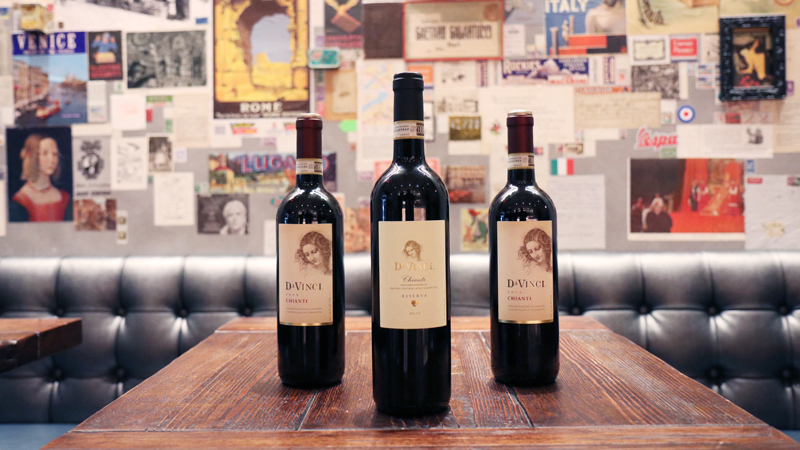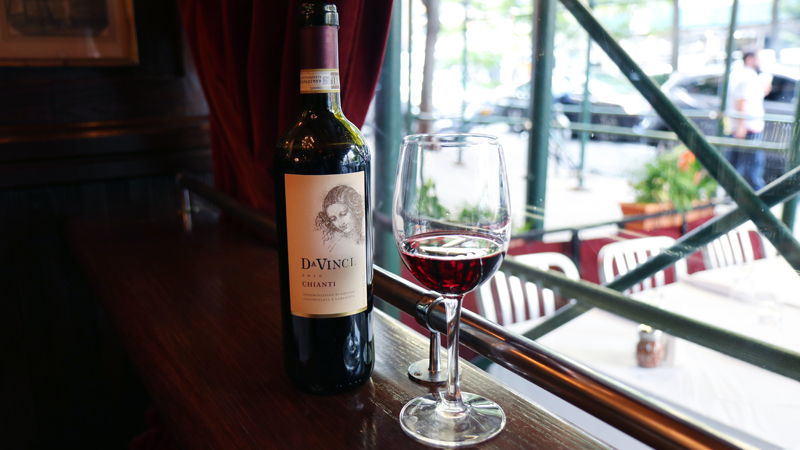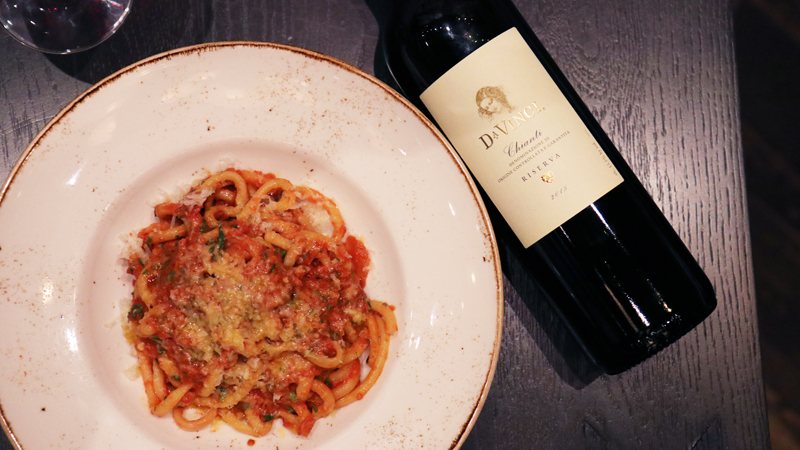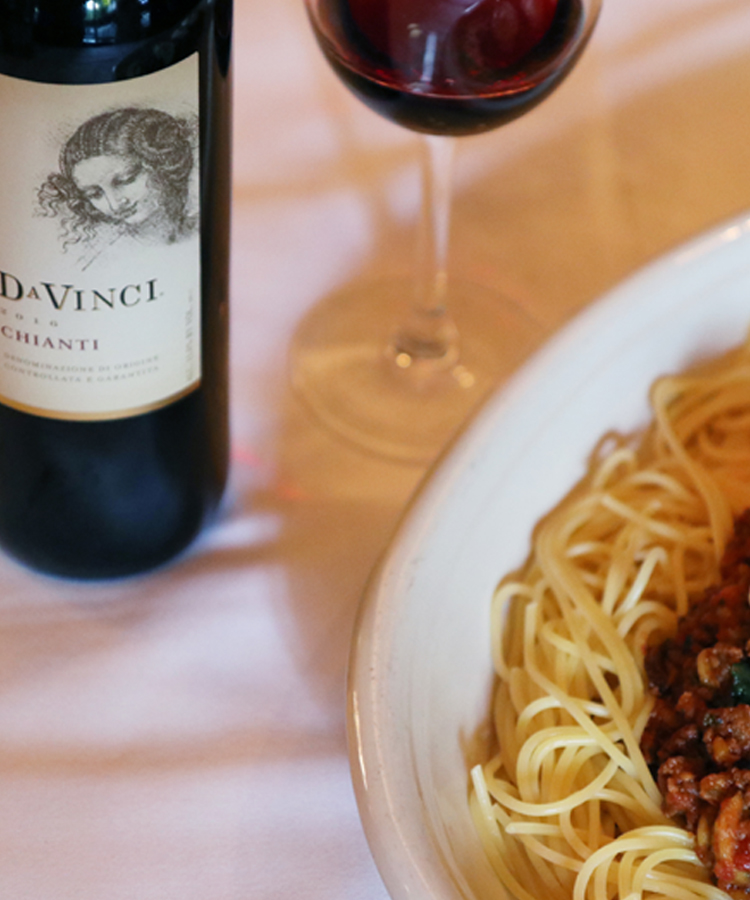
Say the words “red sauce,” and many of us immediately conjure the smell of hearty tomato “gravy” bubbling away on grandma’s stove or in the kitchen of a favorite Italian restaurant. Whether you’re of Italian descent or not, it’s hard to argue that the fresh zing of basil and oregano, the spicy scents of veal, pork, or beef, and a steaming heap of pasta on your plate feels like a warm welcome home.
No classic Italian meal is complete without a glass of ruby red vino at your elbow. These days, that something should be Chianti, but not the straw-covered bottle you might remember from “Lady and the Tramp.” Intrepid purveyors such as DaVinci Wines are leading the fruit-forward charge into a brave new world where Chianti is as approachable as it is memorable.
That straw bottle that the name Chianti may bring to mind is called a “fiasco.” The design originally intended to keep the bottles upright on rowdy tables, and to provide extra protection during shipping. And “Chianti” actually refers to the region of Tuscany from which the wines originate, not the grape itself. That’s Sangiovese, of which a true Chianti must contain at least 75 percent. While many Chiantis are comprised of 100 percent Sangiovese, some winemakers in the region will also blend Sangiovese with a small portion of Cabernet, Merlot, or Syrah. Those can soften the grape’s signature bite and create a more mellow, well-rounded drinking experience.
DaVinci Wine, a co-op of 200 Tuscan wine growers, has a passion for sharing those high-quality — and highly drinkable — wines, alongside the hospitality that’s always defined the region. Today, the consortium brings a whole new face of Chianti to the next generation of wine lovers in an updated package that feels right at home alongside a plate of pasta or a beautiful roast. If you haven’t tried the wine lately, now is the time to give it another go.

History in a Bottle
According to “Chianti Classico: The Search for Tuscany’s Noblest Wine,” the wine and its signature packaging have a long and exciting history. Vintners in the hills between Florence and Siena have been growing and bottling Chianti since the 14th century, and copycats have been trying to ride their coattails for almost as long. Cosimo III de’ Medici, the grand duke of Tuscany from 1670 to 1723, sent it in the now-iconic fiasco to other European nobility, and its popularity caught on from there.
By the late 19th century, regional Chianti producers sent their wine all over the world. Fiascos hit tables as far away as New York, London, Paris, Buenos Aires, and even Sao Paolo. Problem is, not all of it was genuine. Wine sold as Chianti was also made in Naples, Genoa, Sicily, and elsewhere in Italy. The Italian Swiss Colony winery in California even sold a “Tipo Chianti.” That diluted the name, and it became almost a generic term for wine made in Italy, at least on foreign shores.

And even within the Chianti region, the wine’s growing popularity led to some shifty business practices, to keep up with demand. When World War II ended and foreign audiences got even thirstier, regulators decided to expand the borders of the Chianti region and allowed winemakers to use up to 30 percent of white grapes in their red blends. That resulted in a dilution of jewel-like Sangiovese’s richly aromatic, cherry flavors, and did little for the wine’s reputation abroad. Soon, Italian red-sauce restaurant visitors shied away from the fiasco, whose name started to seem distressingly apt.
The Superstar, Sangiovese
Back in the old country, winemakers across the Chianti region began experimenting with Sangiovese. In the late 1940s, Mario Incisa della Rochetta made a wine that he named Sassicaia, after the vineyard where its grapes grew. After it first reached commercial distribution in the early 1970s, Sassicaia became the first of the Super Tuscans we now know and love.
Thanks to those new blends, wine lovers started to reconsider the merits of Sangiovese. The Consorzio Vino Chianti, the governing body that regulates what makes a Chianti a Chianti, also tightened the reins. It elevated Chianti’s status from DOC to DOCG, or “determination of controlled origin” to “determination of controlled origin guaranteed.” In layman’s terms, the new designation eliminated the blending of white grapes into the wine and returned the focus firmly to the superstar Sangiovese.
As of 2013, the United States is the world’s foremost importer of Chianti, totaling 31 percent of the region’s annual production. It’s currently the most popular Italian red wine in America, and for good reason. Chianti reminds us of Tuscany’s sweeping vistas, inviting villas, and welcoming spirit that calls us back to the table, with nary a wicker basket in sight.
Chianti at Today’s Tables
The food we’re eating today echoes Chianti’s renewed popularity, while pairing perfectly with the wine. And the Chianti coming out of DaVinci Wines isn’t the fiasco-clad stuff you remember, just like the dishes your corner bistro put out have all of the charm and none of the scolding that came from nonna’s wooden spoon.
American-accented “red sauce” Italian has enjoyed a resurgence in recent years, as younger diners yearn to return to the Tuscan table in spirit, but with fresh, local ingredients, and elevated takes on the homestyle dishes they remember.

When drinking Chianti, you’ll find an earthy, rustic wine that’s high in mouth-drying tannins. Its scent and taste will remind you of forest fruits, cherries and strawberries, and you might even notice smoke, balsam, or woodsy aromas. It’s also high in acidity, which makes Chianti perfect with pretty much anything you’re craving. It pours beautifully alongside tomato sauces, pizza, and pasta, but your pairings don’t have to end there. It also stands up well to grilled protein, long, slow roasts, or even meaty burgers.
Trying Chianti at the table for the first time? Pour it alongside spaghetti bolognese, hearty lasagna, veal braciole, or even a roast leg of lamb. Salty, assertive cheeses like Pecorino, Parmesan, and Romano also cut through the richness and prep your taste buds for the next bite — and sip. So when the waiter comes around and asks if you want grated cheese, trust us: you do.
Whether you’re hitting your neighborhood wood-fired pizza parlor or upscale Italian joint or whipping up a beautiful meal from the farmer’s market fare, pour DaVinci Chianti to round out your Tuscan-accented experience. And whatever you choose, don’t rush things. In Tuscany, the journey is as essential as the destination.
This article is sponsored by DaVinci Wines. Taste tradition. Discover DaVinci.

